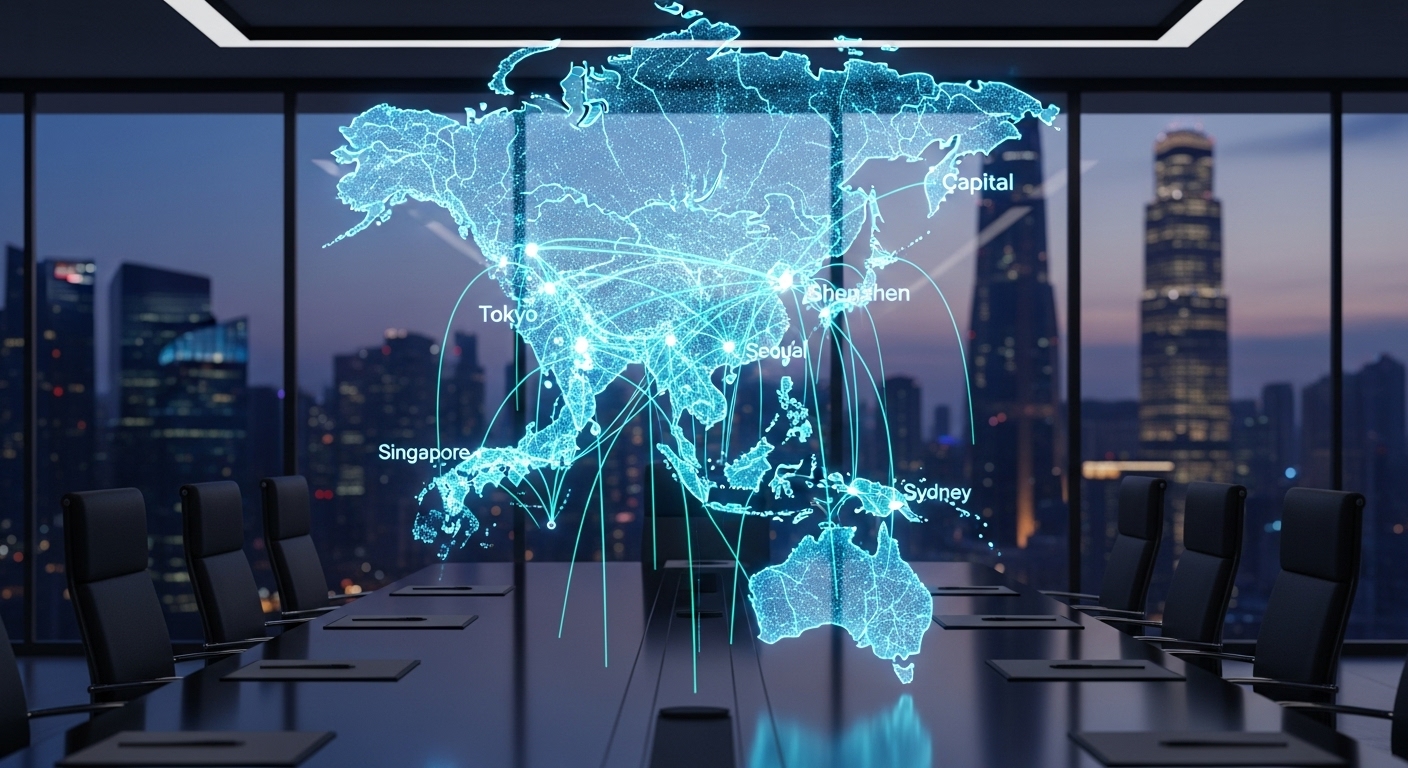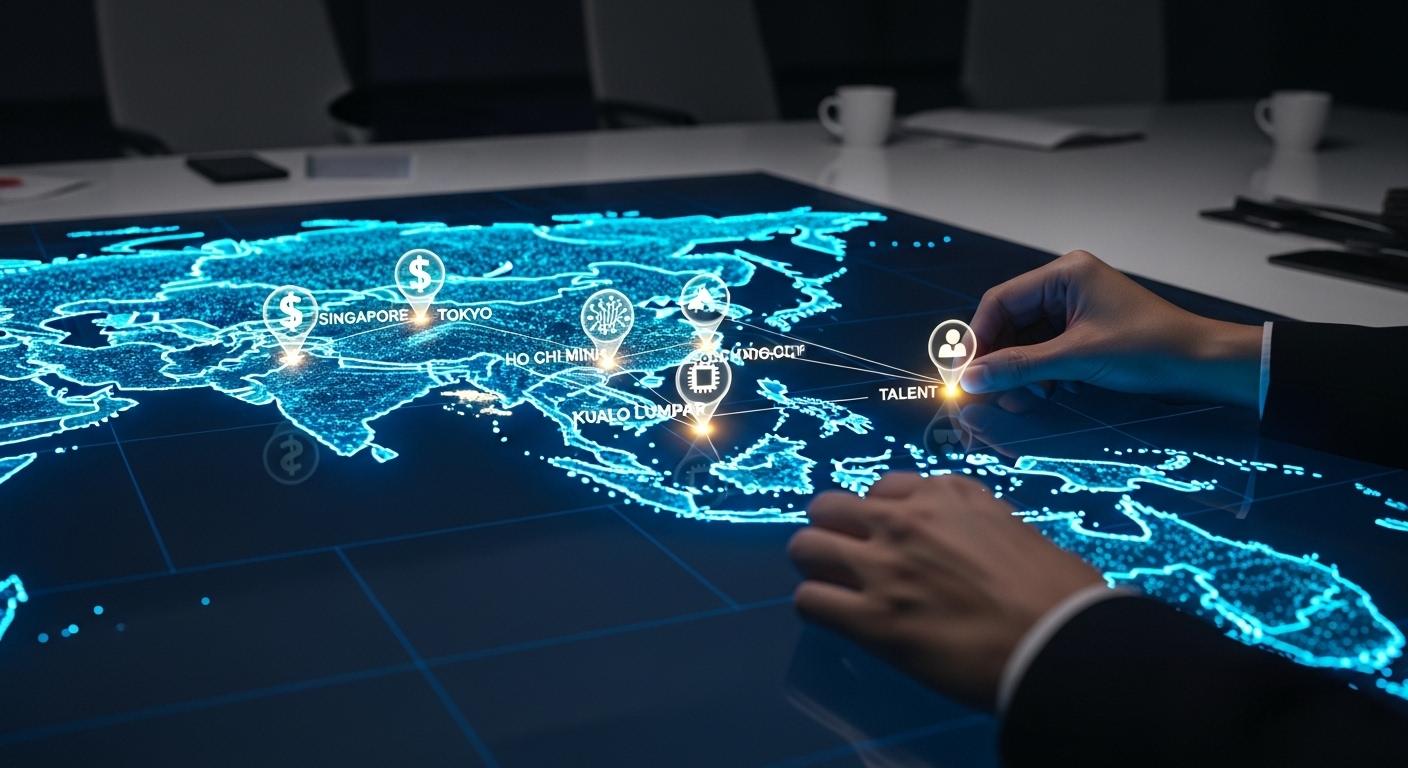The traditional view of the Asia-Pacific (APAC) business landscape often centers on a few monolithic giants. However, a seismic shift, accelerated by relentless digitalization and a global quest for operational resilience, has reshaped the region into a ‘Digital Archipelago.’ This is not a collection of isolated islands but a highly integrated network of specialized hubs, each with a unique value proposition. From the regulatory stability of Singapore to the manufacturing prowess of Shenzhen and the vast talent pools of Bangalore, success in APAC now demands a nuanced, distributed strategy. Understanding this interconnected ecosystem is no longer optional; it is the cornerstone of sustainable growth and investment. This guide serves as a strategic map, charting the flows of talent, technology, and capital across this dynamic archipelago. We will explore the key nodes in this network, examining their individual strengths and how they contribute to the collective power of the region, providing a blueprint for businesses aiming to navigate this new economic geography effectively and build a truly resilient APAC presence.
Singapore: The Archipelago’s Command Center
Positioned at the strategic heart of Southeast Asia, Singapore has solidified its reputation as the command center of the APAC Digital Archipelago. Its success is built on a foundation of political stability, robust legal frameworks, and world-class infrastructure. For multinational corporations, Singapore serves as the quintessential ‘hub-and-spoke’ headquarters, offering unparalleled connectivity and a secure environment for managing regional operations and treasury functions. The government’s proactive Smart Nation initiative has transformed the city-state into a living lab for urban solutions, IoT, and data analytics, fostering a fertile ground for tech innovation. Furthermore, its rigorous intellectual property protection laws make it a trusted location for high-value R&D activities. A key feature of Singapore’s role is its position as a premier data center hub. Its reliable power grid and extensive submarine cable networks ensure that data—the lifeblood of the digital economy—flows seamlessly and securely across the region. While the high cost of living and a competitive talent market present challenges, they are often viewed as a worthwhile investment for the stability and strategic advantages the city provides. As a leading financial center, it attracts significant venture capital and private equity, acting as the primary funding gateway for startups and scale-ups across Southeast Asia. As one report notes, this strategic positioning is deliberate and effective.
“Singapore’s ability to attract and retain global talent, coupled with its strong governance and pro-business policies, makes it a critical node for any company with serious ambitions in Asia.”
In essence, Singapore is the anchor of the archipelago, providing the stability, capital, and regulatory certainty that allows other, more specialized hubs to thrive and innovate.
The Pearl River Delta Nexus: Shenzhen and Hong Kong’s Evolving Synergy
The Greater Bay Area (GBA) initiative has formalized one of the world’s most powerful economic synergies: the partnership between Hong Kong and Shenzhen. Rather than viewing them as competitors, savvy businesses understand them as two sides of the same coin, forming a critical nexus within the APAC archipelago. Hong Kong, with its legacy as a global financial center, offers a mature, internationally recognized legal system and one of the world’s most liquid capital markets. It remains the undisputed gateway for international capital flowing into mainland China and for Chinese enterprises seeking to go global. Its service-oriented economy, deep pool of financial and legal professionals, and free flow of information make it the ideal location for IPOs, fundraising, and complex cross-border transactions. Just across the border, Shenzhen represents the other half of the equation: speed, innovation, and manufacturing at scale. Once known as the ‘world’s factory,’ it has transformed into a global hardware and software innovation powerhouse. Home to giants like Huawei and Tencent, Shenzhen boasts an unparalleled electronics supply chain and a culture of rapid prototyping that can take a product from concept to market at breathtaking speed. This ecosystem is not just for large corporations; it’s a haven for hardware startups and innovators from around the globe. The synergy is clear: companies can raise capital and manage international finance in Hong Kong, then utilize Shenzhen’s ecosystem for R&D, engineering, and manufacturing. This ‘finance-front, factory-back’ model de-risks innovation and accelerates growth, creating a potent combination that few other regions can match. The ongoing development of high-speed rail and streamlined border crossings within the GBA will only deepen this integration, solidifying the Pearl River Delta’s role as the engine of high-tech production for the entire archipelago.
Seoul and Tokyo: The Titans of Deep Tech and Precision
While emerging hubs generate buzz, the established titans of North Asia, Seoul and Tokyo, remain indispensable centers of gravity for deep technology and high-value innovation. They function as the archipelago’s R&D powerhouses, driving advancements that ripple across global industries. Tokyo, the capital of the world’s third-largest economy, is a leader in precision manufacturing, robotics, and material science. Japanese companies are at the forefront of creating the complex machinery and components that power global supply chains. The city’s corporate culture emphasizes long-term R&D investment, resulting in a steady stream of foundational patents and technologies. Moreover, Tokyo is a surprisingly vibrant startup ecosystem, particularly in fields like AI, life sciences, and advanced robotics, supported by a wealth of engineering talent and corporate venture capital. Just a short flight away, Seoul presents a dynamic blend of industrial might and cultural influence. As the headquarters for global giants like Samsung and Hyundai, South Korea’s capital is a world leader in semiconductors, consumer electronics, and automotive technology. Beyond this industrial base, Seoul has cultivated a hyper-connected, tech-savvy society that has become a testbed for new digital services, from 5G applications to innovative gaming and entertainment platforms. The ‘K-startup’ scene is booming, fueled by significant government support, a highly educated workforce, and a cultural embrace of entrepreneurship. Seoul is particularly dominant in software, e-commerce, and the burgeoning metaverse, making it a critical hub for businesses focused on digital consumer experiences. For companies operating in the Digital Archipelago, Tokyo and Seoul are not just markets; they are sources of cutting-edge technology, strategic partnerships, and world-class engineering talent that are essential for maintaining a competitive edge.
Bangalore and Jakarta: The Engines of Hyper-Growth
At the heart of Asia’s demographic and digital dividend are the hyper-growth engines of Bangalore and Jakarta. These cities are defined by their scale, youthful energy, and a pace of digital adoption that is reshaping the global economy. Bangalore, often dubbed the ‘Silicon Valley of India,’ is perhaps the world’s most concentrated hub for technology talent. For decades, it has been the backbone of the global IT services industry, but today it is much more. It is a sprawling ecosystem of R&D centers for multinational corporations, hundreds of thousands of software developers, and a fiercely competitive startup scene that consistently attracts massive waves of venture capital. The city is a leader in enterprise software, fintech, and e-commerce solutions, driven by a deep pool of skilled, English-speaking engineers. While infrastructure challenges persist, the sheer scale of its talent and innovation output makes it an essential node for any company looking to build and scale technology platforms. Further east, Jakarta stands as the epicenter of Southeast Asia’s largest and fastest-growing digital economy. As the capital of Indonesia, it represents a market of over 270 million people, a significant portion of whom are young, urban, and mobile-first. This has created an explosive environment for consumer technology. Jakarta is a battleground for super-apps, a hotbed for fintech innovation catering to a vast unbanked and underbanked population, and a leader in the e-commerce and ride-hailing sectors. The city’s challenges, such as traffic congestion and bureaucracy, are significant, but they also create immense opportunities for tech-driven solutions. For businesses focused on consumer markets, Jakarta offers direct access to a massive and rapidly digitizing user base, making it an indispensable hub for market expansion, product localization, and understanding the future of mobile commerce in emerging markets.
Sydney: The Southern Anchor of Stability and Lifestyle
Serving as the southern anchor of the APAC Digital Archipelago, Sydney offers a unique combination of economic stability, a high quality of life, and strong connections to Asian markets. While not possessing the sheer scale of hubs like Tokyo or Bangalore, its strategic value lies in its role as a secure, transparent, and highly livable base for regional operations. Sydney is a mature and sophisticated financial services hub, with particular strengths in fintech, asset management, and insurance. Australia’s robust regulatory environment and stable political system make it an attractive location for companies that prioritize risk management and corporate governance. The city has also cultivated a thriving tech startup scene, particularly in areas like SaaS (Software-as-a-Service), agritech, and renewable energy technology, supported by strong universities and government R&D incentives. One of Sydney’s most significant competitive advantages is its ability to attract and retain top global talent. Its world-renowned lifestyle, multicultural environment, and status as an English-speaking hub make it a highly desirable destination for skilled professionals and their families. This talent magnet effect provides companies with a diverse and highly educated workforce. As a bridge between the West and Asia, Sydney is perfectly positioned for companies that require a deep understanding of both markets. Its strong trade agreements and cultural ties across the APAC region, combined with its Western business practices, create a stable and effective platform from which to manage a pan-Asian strategy. It is the ideal hub for regional headquarters, sales and marketing operations, and businesses that value long-term stability and talent retention as core pillars of their expansion strategy.
Navigating the Archipelago: A Unified Strategy for Expansion
The key to conquering the Asia-Pacific market in the current era is to abandon the notion of finding a single, perfect headquarters. Instead, businesses must adopt a distributed ‘archipelago strategy,’ leveraging the specialized strengths of multiple hubs in a unified, cohesive plan. This approach treats the region not as a collection of separate countries, but as an integrated economic network. A successful strategy might involve establishing a financial and legal hub in Singapore to manage regional treasury and secure capital, while simultaneously building a large-scale software development and R&D center in Bangalore to tap into its vast engineering talent pool. For hardware innovation and rapid prototyping, Shenzhen is the unparalleled choice, allowing for swift product iteration. Meanwhile, consumer-facing businesses might establish a marketing and product localization team in Jakarta to get closer to the pulse of Southeast Asia’s largest consumer market. Finally, a regional sales and leadership team could be based in Sydney to take advantage of its stability and lifestyle benefits for attracting senior talent. This multi-hub model diversifies risk, optimizes costs, and maximizes access to both talent and markets. However, executing this strategy requires meticulous coordination. It necessitates a deep understanding of the local regulatory landscapes, tax treaties, and cultural nuances of each location. A robust digital infrastructure is critical, with seamless communication and project management platforms to ensure that distributed teams work as a single, efficient unit. Companies must invest in leaders who can manage cross-cultural teams and foster a unified corporate culture despite geographical distances. The future of APAC expansion belongs not to the company that picks the ‘best’ city, but to the one that masters the art of connecting the dots across the entire Digital Archipelago.
Conclusion
The Asia-Pacific region has evolved far beyond a set of siloed national markets. It is now a vibrant, interconnected Digital Archipelago, a network of specialized cities that collectively form the world’s most dynamic economic zone. From the financial command center of Singapore and the innovation nexus of the Pearl River Delta to the deep-tech titans of Seoul and Tokyo and the hyper-growth engines of Bangalore and Jakarta, each hub offers a distinct and powerful advantage. The linear, single-hub approach to expansion is now obsolete. The winning strategy is a distributed one, where businesses intelligently weave together the unique strengths of these diverse locations to create a resilient, efficient, and highly competitive regional presence. This requires a shift in mindset—viewing APAC not as a territory to be conquered from one beachhead, but as a network to be navigated with precision and foresight. By strategically placing functions where they can thrive—finance in one hub, R&D in another, manufacturing in a third—companies can optimize for talent, cost, and market access simultaneously. As digital transformation continues to erase borders and connect economies, mastering the currents of this archipelago will be the defining characteristic of the global business leaders of tomorrow. The map is drawn; the opportunity lies in navigating it with a unified vision.





